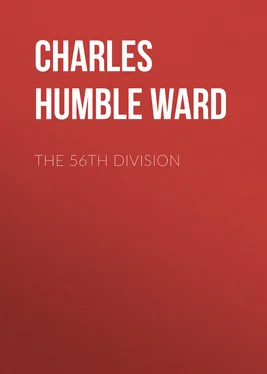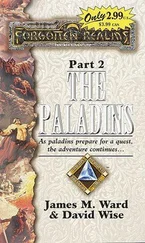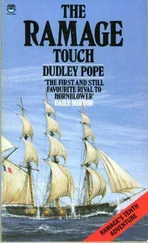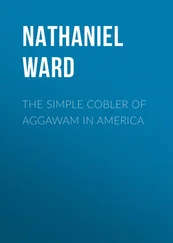Charles Humble Dudley Ward - The 56th Division
Здесь есть возможность читать онлайн «Charles Humble Dudley Ward - The 56th Division» — ознакомительный отрывок электронной книги совершенно бесплатно, а после прочтения отрывка купить полную версию. В некоторых случаях можно слушать аудио, скачать через торрент в формате fb2 и присутствует краткое содержание. Жанр: foreign_prose, История, foreign_edu, foreign_antique, на английском языке. Описание произведения, (предисловие) а так же отзывы посетителей доступны на портале библиотеки ЛибКат.
- Название:The 56th Division
- Автор:
- Жанр:
- Год:неизвестен
- ISBN:нет данных
- Рейтинг книги:5 / 5. Голосов: 1
-
Избранное:Добавить в избранное
- Отзывы:
-
Ваша оценка:
- 100
- 1
- 2
- 3
- 4
- 5
The 56th Division: краткое содержание, описание и аннотация
Предлагаем к чтению аннотацию, описание, краткое содержание или предисловие (зависит от того, что написал сам автор книги «The 56th Division»). Если вы не нашли необходимую информацию о книге — напишите в комментариях, мы постараемся отыскать её.
The 56th Division — читать онлайн ознакомительный отрывок
Ниже представлен текст книги, разбитый по страницам. Система сохранения места последней прочитанной страницы, позволяет с удобством читать онлайн бесплатно книгу «The 56th Division», без необходимости каждый раз заново искать на чём Вы остановились. Поставьте закладку, и сможете в любой момент перейти на страницу, на которой закончили чтение.
Интервал:
Закладка:
A patrol of the 1st London Regt. reported, on the 29th, that new French wire and some strands of barbed wire had been put up. Up to the last moment the Germans worked at their defences. Great activity was seen on the morning of the 30th.
The artillery grew more furious. A hail from heavy and field-gun batteries descended on trenches and strong points. Lieut.-Col. Prechtel’s wire-cutting group pounded away at the wire. The trench mortar batteries added their quota, though they were chased from pillar to post by German retaliation. And as the evening shadows fell on the last day, the usual night firing was taken up by the never-wearying gunners.
The main object of this attack was to divert against the VII Corps enemy artillery and infantry, which might otherwise have been used against the left flank of the Fourth Army at Serre. To achieve this result the two divisions, 46th and 56th, were given the task of cutting off the Gommecourt salient.
From the 24th to the 30th June the line of the 56th Division was held by the 167th Brigade. The other two brigades then practised the assault on a replica of the German defence system near Halloy. In the early morning of the 1st July the 168th and 169th Brigades took over the line, and the 167th withdrew to Hébuterne.
The 5th Cheshire Regt. had a company with each of the assaulting brigades; the Royal Engineers sent a section of the 2/1st London Field Coy. with the 169th Brigade, and a section of the 2/2nd London Field Coy. with the 168th Brigade.
The London Scottish attacked on the right with the Kensingtons in support; then came the Rangers with the 4th London Regt. in support. The rôle of these battalions of the 168th Brigade may be briefly described as a half-wheel to the right. They had to capture the strong point round about Farm and Farmer trenches, and establish other strong points at Elbe and Et, south-east of Nameless Farm, and the junction of Felon and Epte.
On the extreme left of the division was the London Rifle Brigade, and next to them the Queen Victoria’s Rifles. Again as a rough indication of their task, they had to make a left wheel and hold the line of the edge of Gommecourt Park, establishing strong points. The Queen’s Westminster Rifles would then push straight on, carrying the attack forward, as it were, between the right and left wheels, and capture the strong point known as the Quadrilateral.
At 6.25 a.m. every gun opened on the German lines, and for one hour the enemy was pelted with shells of all sizes, the maximum speed of fire being reached at 7.20 and lasting for ten minutes. At this moment smoke was discharged from the left of our line near Z hedge, and in five minutes the smoke was dense along the whole front. Then the assaulting battalions climbed out of their trenches and advanced steadily into the heavy fog.
The German front line was reached with little loss—there was machine-gun fire, but it was apparently high. Almost immediately, however, the Germans gave an indication of their counter-measures—they were reported by the London Scottish to be shelling their own line. This gallant regiment succeeded in gaining practically the whole of its objectives, but they were never very comfortable. Owing to the smoke the two left companies lost direction, the flank company being drawn off in the direction of Nameless Farm, and the inner company failed to recognise its position and overran its objective. This was in no way surprising, as it was extremely difficult, owing to the heavy bombardment, to find, in some places, any trench at all.
Next to the London Scottish the Rangers met with strong resistance, and probably strayed a bit to their left. They were soon in trouble, and two companies of the 1/4th London Regt. were sent forward to reinforce them. Together these two units succeeded in reaching the junction of Epte with Felon and Fell, but there was a gap between them and the London Scottish.
On the left of the attack the London Rifle Brigade had swept up to the edge of Gommecourt Park and commenced to consolidate their position. The Queen Victoria’s Rifles, on the other hand, were meeting with fierce resistance, and were short of the Cemetery. The Queen’s Westminster Rifles, advancing in rear, soon became hopelessly mixed up with the Queen Victoria’s Rifles. Within an hour it became clear that the infantry were everywhere engaged in hand-to-hand fighting.
The German counter-attack plans matured about an hour after the assault was launched. Their barrage on No Man’s Land was increased to fearful intensity, and from Gommecourt Park, which was apparently packed with men in deep dugouts, came strong bombing attacks. The London Rifle Brigade called for reinforcements, but platoons of the reserve company failed to get through the barrage and across to the German front line.
The assaulting companies had been provided with boards bearing the names of the trenches to be captured, and as they fought their way forward, these boards were stuck up to mark the advance. At about 9.30 a.m. the artillery observers, who did most useful and gallant work during the whole action, could report that all objectives were gained with the exception of the Quadrilateral. But the troops in the German lines were now held there firmly by the enemy barrage; they were cut off from all communication by runners, and from all reinforcements. On the right the Kensingtons had failed in an attempt to reinforce the London Scottish. Captain Tagart, of the former regiment, had led his company out, but was killed, and of the two remaining officers, one was killed and the other wounded. A confused message having reached headquarters, a fresh officer was sent down with orders to rally the men and make another attempt to cross the inferno of No Man’s Land. He found that there were only twenty men left, and that to cross with them was impossible.
The Royal Flying Corps contact machine, detailed to report on the situation, sent constant messages that the Quadrilateral was empty of troops of either side. The artillery observers, however, reported seeing many parties of hostile bombers moving through the Park, and enemy troops collecting behind the Cemetery.
It seemed as though all battalions had at one time gained their objectives except the Queen’s Westminster Rifles, but no blame falls on this fine regiment. Lieut.-Col. Shoolbred says in his report, “As no officer who got as far as this (first line) ever returned, it is difficult to know in detail what happened.” The three captains, Cockerill, Mott, and Swainson, were killed before reaching the second German line. Apparently the wire on this section of the front was not satisfactorily dealt with. The report says:
“A great deal of the wire was not cut at all, so that both the Victorias and ourselves had to file in, in close order, through gaps, and many were hit.... The losses were heavy before reaching the bank at the Gommecourt-Nameless Farm road. At this point our three companies and the two Victorias were joined up and intermixed.... Only one runner ever succeeded in getting through from the assaulting companies.”
There were a few brave young officers of the Queen’s Westminsters left at this point—2/Lieuts. J. A. Horne, A. G. V. Yates, A. G. Negus, D. F. Upton, E. H. Bovill. They proceeded to collect their men and lead them forward, and while doing this 2/Lieuts. Yates and Negus were killed. 2/Lieut. Upton, having then reorganised a bombing party, bombed the enemy out of Fellow and reached the Cemetery. To do this they had to run over the open and drop into Fellow. Another party tried at the same time to bomb their way up Etch, but found it was too strongly held by the enemy. Meanwhile, 2/Lieut. Upton had stuck up his signboard, and more men doubled up over the open and dropped into Fellow Trench. 2/Lieut. Horne then mounted a Lewis gun, under cover of which a platoon of the Cheshire Regt. and some Royal Engineers blocked Etch and also Fell (it would seem doubtful, from this statement, whether Fell was ever held).
Читать дальшеИнтервал:
Закладка:
Похожие книги на «The 56th Division»
Представляем Вашему вниманию похожие книги на «The 56th Division» списком для выбора. Мы отобрали схожую по названию и смыслу литературу в надежде предоставить читателям больше вариантов отыскать новые, интересные, ещё непрочитанные произведения.
Обсуждение, отзывы о книге «The 56th Division» и просто собственные мнения читателей. Оставьте ваши комментарии, напишите, что Вы думаете о произведении, его смысле или главных героях. Укажите что конкретно понравилось, а что нет, и почему Вы так считаете.




![Александр Ирвин - Tom Clancy’s The Division 2. Фальшивый рассвет [litres]](/books/417744/aleksandr-irvin-tom-clancy-s-the-division-2-falsh-thumb.webp)







